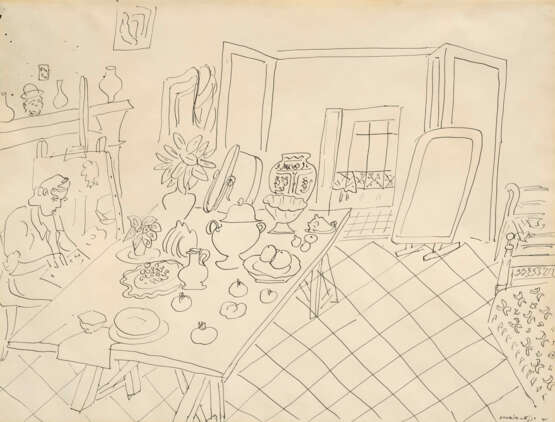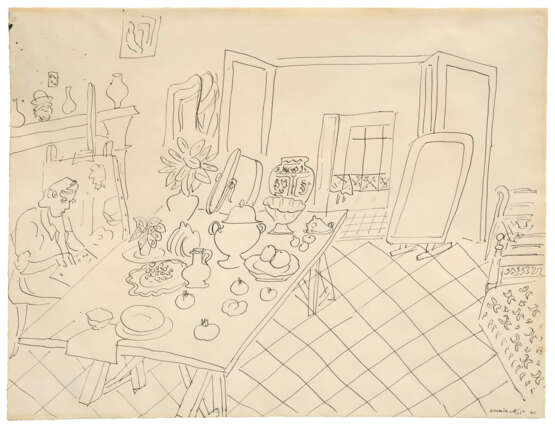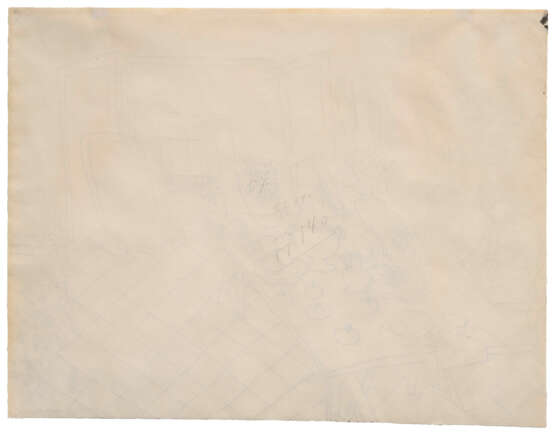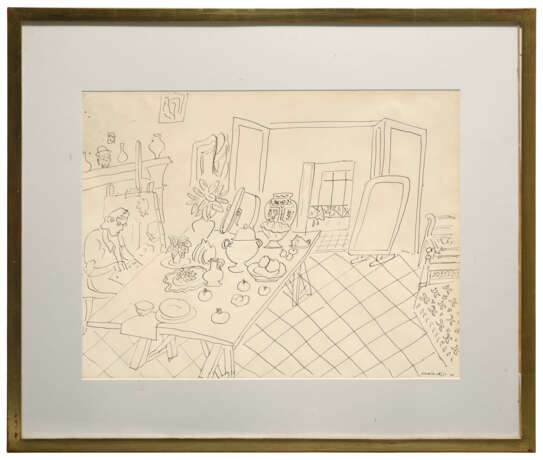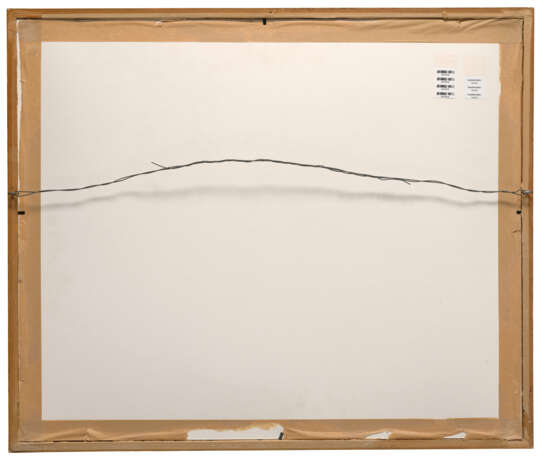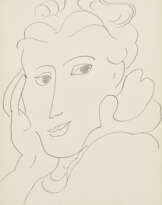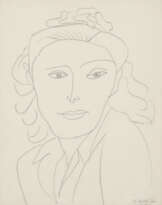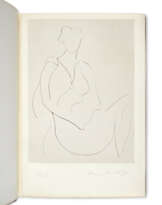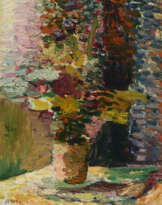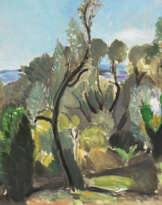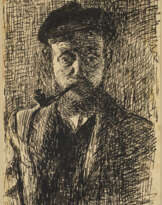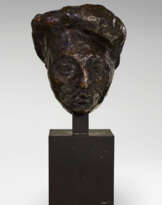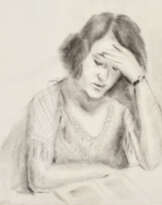ID 930162
Lot 120 | Henri Matisse (1869-1954)
Estimate value
€ 70 000 – 100 000
Intérieur, fenêtre ouverte
signé et daté 'Henri Matisse 41' (en bas à droite)
plume et encre de Chine sur papier
40.2 x 52.4 cm.
Exécuté en 1941
signed and dated 'Henri Matisse 41' (lower right)
pen and India ink on paper
15 7/8 x 20 5/8 in.
Executed in 1941
Provenance
Collection particulière, Belgique (vers les années 1950).
Puis par descendance au propriétaire actuel.
Special notice
Artist's Resale Right ("droit de Suite").
If the Artist's Resale Right Regulations 2006 apply to this lot, the buyer also agrees to pay us an amount equal to the resale royalty provided for in those Regulations, and we undertake to the buyer to pay such amount to the artist's collection agent.
Post lot text
«Ces intérieurs irréels correspondaient à la théâtralité essentielle de Nice, une ville qui a toujours donné plus de valeur au décor qu’à l’architecture, où les années 20 ont vu naître un nouveau médium entièrement basé sur l’irréalité»
H. Spurling, Matisse, La vie, Londres, 2009, p. 339.
À partir des années 1920, Henri Matisse est passé des dessins ombragés au fusain à ce qui deviendra son style caractéristique en tant que dessinateur, réalisant des dessins à la plume et à l’encre de Chine. John Elderfield a mis en avant que «Dans la seconde moitié des années 1920, les dessins de Matisse semblent abandonner leurs humeurs nostalgiques pour devenir plus détendus et hédonistes, comme l’étaient la plupart de ses tableaux. Cette évolution a été rendue possible par l’abandon du fusain tonal au profit de dessins faits de lignes.” (dans Les Dessins d’Henri Matisse, cat. exp., The Museum of Modern Art, New York, 1984, p. 91).
Matisse a exécuté la plupart de ses dessins à l'encre en lignes pures et simples qui tracent les contours essentiels des sujets ainsi que les traits les plus épurés d’objets et de motifs décoratifs. Dans certains dessins, comme on peut le voir ici, il a employé la technique classique d’un graveur, en hachurant certaines zones pour donner poids et profondeur à l'équilibre de la composition. Tandis que Matisse faisait souvent des dessins hachurés avec un crayon à papier, il n’a exécuté ce genre de dessin à l’encre que de façon occasionnelle. Cela représente un effort de concentration très intense de sa part, et les résultats sont particulièrement évocateurs.
“These unreal interiors matched the essential theatricality of Nice, a city that had always valued décor above architecture, where the 1920s saw the invention of an entirely new medium based on unreality.”
H. Spurling, Matisse, The Life, London, 2009, p. 339.
From the 1920s, Henri Matisse turned from shaded charcoal drawings to what would prove to become his signature style of draughtsmanship, making line drawings in pen and India ink. John Elderfield has pointed out that ‘In the second half of the 1920s, Matisse's drawings would seem to throw off their wistful moods to become as relaxed and hedonistic as most of his paintings were. This was accompanied and made possible by a shift from tonal charcoal drawing to line’ (in The Drawings of Henri Matisse, exh. cat., The Museum of Modern Art, New York, 1984, p. 91).
Matisse executed most of his ink drawings in pure, unadorned lines that trace the essential contours of the figure as well as the barest outlines of objects and decorative motifs. In some drawings, as seen here, he practiced the classic technique of an etcher, and hatched select areas to lend weight and depth to the balance of the composition. While Matisse often made hatched drawings in erasable pencil, he executed drawings of this kind in ink only occasionally. These represent an especially focused and intensive effort on his part, and the results are richly evocative.
| Artist: | Henri Matisse (1869 - 1954) |
|---|---|
| Medium: | Acrylic glass, Plastic |
| Artist: | Henri Matisse (1869 - 1954) |
|---|---|
| Medium: | Acrylic glass, Plastic |
| Address of auction |
CHRISTIE'S 9 Avenue Matignon 75008 Paris France | ||||||||||||||
|---|---|---|---|---|---|---|---|---|---|---|---|---|---|---|---|
| Preview |
| ||||||||||||||
| Phone | +33 (0)1 40 76 85 85 | ||||||||||||||
| Fax | +33 (0)1 40 76 85 86 | ||||||||||||||
| Conditions of purchase | Conditions of purchase | ||||||||||||||
| Shipping |
Postal service Courier service pickup by yourself | ||||||||||||||
| Payment methods |
Wire Transfer | ||||||||||||||
| Business hours | Business hours
|
